View in other NatureServe Network Field Guides
NatureServe
Montana
Utah
Wyoming
Idaho
Wisconsin
British Columbia
South Carolina
Yukon
California
New York
Short-fringe Star-thistle - Centaurea nigrescens
Other Names:
Tyrol Knapweed, Vochin Knapweed,
Centaurea dubia ssp. nigrescens (invalid), Cantaurea dubia ssp. vochinensis, Centaurea jacea ssp. nigrescens, Centaurea transalpina, Centaurea vochinensis
Non-native Species
Global Rank:
GNR
State Rank:
SNA
(see State Rank Reason below)
C-value:
Agency Status
USFWS:
USFS:
BLM:
External Links
State Rank Reason (see State Rank above)
Centaurea nigrescens is a plant native to Eurasia and introduced worldwide (FNA 2006). A conservation status rank is not applicable (SNA) because the plant is an exotic (non-native) in Montana that is not a suitable target for conservation activities.
General Description
PLANTS (FNA 2006): A herbaceous perennial with erect, simple or branched stems that grow to heights of 30-150 cm. Plants are villous to scabrous with septate hairs and loosely tomentose, or more or less glabrate.
LEAVES (FNA 2006): Basal and lower stem leaves are petiolate with oblanceolate or elliptic, 5–25 cm long blades. Leaf margins are entire to shallowly dentate to irregularly pinnately lobed. Upper stem leaves become gradually smaller, are linear to lanceolate, and have entire or dentate margins.
INFLORESCENCE (FNA 2006): Corymbiform. Few, relatively narrow flower heads are borne on leafy-bracted peduncles (stems). Flowering heads are composed of ray or disk florets with purple (rarely white) petals. Involucres are cylindric or ovoid to campanulate, 15–18 mm high, and usually longer than wide. Involucral bracts appear black and green; green portions are not completely covered by the black fringe of adjacent bracts. Involucral bracts are more-or-less triangular with irregularly dentate or lobed margins, but are not spine-tipped. The body of the bract is tomentose or glabrous and usually not covered by the expanded fringe from adjacent bracts.
Phenology
Flowering June to October (FNA 2006).
Diagnostic Characteristics
The Centaurea jacea complex has been the subject of much controversy (FNA 2006). These plants are widely distributed in Europe and variable in easily noticeable characteristics of their flowering heads, florets, and fruits (cypselae). Within this complex, numerous species have been named, but all are capable of interbreeding, and natural hybridization has resulted in intermediates that variously combine the features of their parents. These intermediates have been considered as species or as infraspecific taxa within the parental species. This has resulted in tangled nomenclature, further complicated by names misapplied in their use and infraspecific names that are inadequately indexed.
For the Centaurea jacea complex, MTNHP follows the Centaurea treatment by Keil & Ochsmann in FNA, Vol. 19 (2006). 3 species (Centaurea jacea, Centaurea nigra, Centaurea nigrescens) and 1 nothospecies [formed by direct hybridization of 2 species and not by other hybrids], Centaurea xmoncktonii are recognized in MT. However, all could be treated as 1 species, Centaurea jacea with 3 subspecies (jacea, nigra, nigrescens) and 1 nothosubspecies hybrid, C. jacea ssp. xpratensis.
The complex of Centaurea jacea, Centaurea nigra, Centaurea nigrescens, Centaurea xmoncktonii share characteristics of: a) Perennial, b) Involucres 15-18 mm tall, c) Lower portion of the involucral bracts have entire margins and their upper portion have fringed appendages that are little to not decurrent along the margin and are not spine-tippped. They are distinguished by the following characteristics.
Centaurea jacea: Involucral bracts are light to dark brown, roundish (seldom triangular), scarious, and more-or-less undivided to irregularly lacerate. Florets are disc flowers that lack a pappus.
Centaurea nigra: Involucres appear totally black and are usually about as wide as high. Involucral bracts are dark brown to black; any green portion is mostly covered by the black fringe of adjacent bracts. Bracts are more-or-less triangular with margins evenly fringed into numerous wiry lobes. The body of the bract is tomentose or glabrous. Florets are disc flowers with a blackish pappus of 0.5-1.0 mm long bristles that easily detach.
Centaurea nigrescens: Involucres are relatively narrow, usually longer than wide. Involucral bracts appear black and green; green portions are mostly not covered by the black fringe of adjacent bracts. Bracts are more-or-less triangular with irregularly dentate or lobed margins. Florets have no pappus or have many bristles of unequal length that easily detach.
Centaurea xmoncktonii: Involucres are relatively broad. Involucral bracts are light to dark brown, more-or-less triangular, and have variable margins from coarsely dentate to evenly fringed. Sterile florets are somewhat expanded and exceed the length of the 15-18 mm long fertile florets. Florets are of ray flowers and have none or 0.5-1.0 mm long pappus bristles that easily detach.
Species Range
Montana Range
Range Descriptions

 Non-native
Non-native
Range Comments
Native to Eurasia (FNA 2006). Reported in Montana by the Flora of North America (FNA 2006); however, the basis for this report has not been found.
Observations in Montana Natural Heritage Program Database
Number of Observations: 3
(Click on the following maps and charts to see full sized version)
Map Help and Descriptions
Relative Density
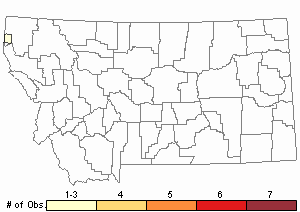
Recency
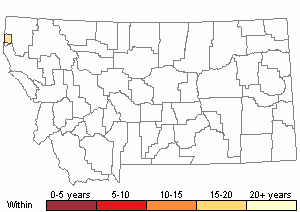
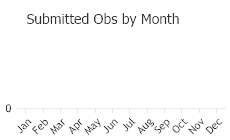
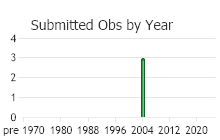
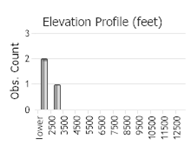 (Observations spanning multiple months or years are excluded from time charts)
(Observations spanning multiple months or years are excluded from time charts)
Habitat
Roadsides, fields, and waste areas at elevations from 0 to 1,000 meters (FNA 2006).
Ecology
POLLINATORS The following animal species have been reported as pollinators of this plant species or its genus where their geographic ranges overlap:
Bombus vagans,
Bombus bifarius,
Bombus centralis,
Bombus fervidus,
Bombus rufocinctus,
Bombus ternarius,
Bombus terricola,
Bombus occidentalis,
Bombus griseocollis,
Bombus impatiens,
Bombus insularis, and
Bombus suckleyi (Thorp et al. 1983, Johnson 1986, Colla and Dumesh 2010, Koch et al. 2012, Williams et al. 2014, Tripoldi and Szalanski 2015).
Reproductive Characteristics
See also Diagnostic Characteristics.
Flowering heads are composed of about 40 to 100, purple (rarely white) ray florettes (FNA 2006). All florets are fertile florets corollas from 15-18 mm long. The fruit (cypsela) is tan, 2.5-3.0 mm long and finely hairy. The pappus is made of blackish bristles, 0.5-1 mm long, that easily detach.
Management
Stewardship Responsibility
References
- Literature Cited AboveLegend:
 View Online Publication
View Online Publication Colla, S.R. and S. Dumesh. 2010. The bumble bees of southern Ontario: notes on natural history and distribution. Journal of the Entomological Society of Ontario 141:39-68.
Colla, S.R. and S. Dumesh. 2010. The bumble bees of southern Ontario: notes on natural history and distribution. Journal of the Entomological Society of Ontario 141:39-68. Flora of North America Editorial Committee. 2006. Flora of North America North of Mexico. Vol. 19. Magnoliophyta: Asteridae, part 6: Asteraceae, part 1. Oxford Univ. Press, New York. xxiv + 579 pp.
Flora of North America Editorial Committee. 2006. Flora of North America North of Mexico. Vol. 19. Magnoliophyta: Asteridae, part 6: Asteraceae, part 1. Oxford Univ. Press, New York. xxiv + 579 pp. Johnson, R.A. 1986. Intraspecific resource partitioning in the bumble bees Bombus ternarius and B. pennsylvanicus. Ecology 67:133-138.
Johnson, R.A. 1986. Intraspecific resource partitioning in the bumble bees Bombus ternarius and B. pennsylvanicus. Ecology 67:133-138. Koch, J., J. Strange, and P. Williams. 2012. Bumble bees of the western United States. Washington, DC: USDA Forest Service, Pollinator Partnership. 143 p.
Koch, J., J. Strange, and P. Williams. 2012. Bumble bees of the western United States. Washington, DC: USDA Forest Service, Pollinator Partnership. 143 p. Thorp, R.W., D.S. Horning, and L.L. Dunning. 1983. Bumble bees and cuckoo bumble bees of California (Hymenoptera: Apidae). Bulletin of the California Insect Survey 23:1-79.
Thorp, R.W., D.S. Horning, and L.L. Dunning. 1983. Bumble bees and cuckoo bumble bees of California (Hymenoptera: Apidae). Bulletin of the California Insect Survey 23:1-79. Tripoldi, A.D. and A.L. Szalanski. 2015. The bumble bees (Hymenoptera: Apidae: Bombus) of Arkansas, fifty years later. Journal of Melittology 50: doi: http://dx.doi.org/10.17161/jom.v0i50.4834
Tripoldi, A.D. and A.L. Szalanski. 2015. The bumble bees (Hymenoptera: Apidae: Bombus) of Arkansas, fifty years later. Journal of Melittology 50: doi: http://dx.doi.org/10.17161/jom.v0i50.4834 Williams, P., R. Thorp, L. Richardson, and S. Colla. 2014. Bumble Bees of North America. Princeton, NJ: Princeton University Press. 208 p.
Williams, P., R. Thorp, L. Richardson, and S. Colla. 2014. Bumble Bees of North America. Princeton, NJ: Princeton University Press. 208 p.
- Additional ReferencesLegend:
 View Online Publication
View Online Publication
Do you know of a citation we're missing? Flora of North America Editorial Committee. 2006. Flora of North America North of Mexico. Vol. 20. Magnoliophyta: Asteridae, part 7: Asteraceae, part 2. Oxford Univ. Press, New York. xxii + 666 pp.
Flora of North America Editorial Committee. 2006. Flora of North America North of Mexico. Vol. 20. Magnoliophyta: Asteridae, part 7: Asteraceae, part 2. Oxford Univ. Press, New York. xxii + 666 pp.
- Web Search Engines for Articles on "Short-fringe Star-thistle"





